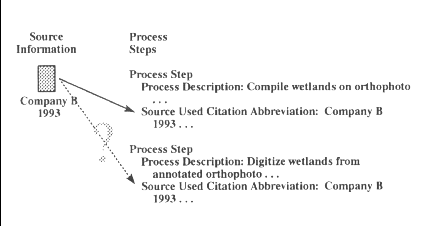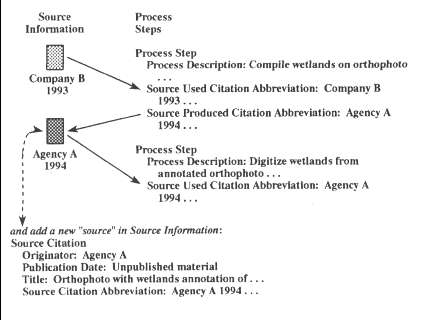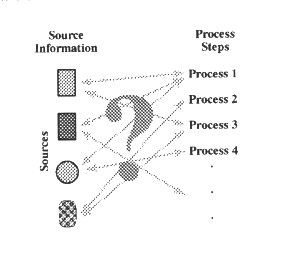
One could describe each source used in the description of each processing step, or describe all the processing steps in which each source participates in the description for the sources. A better way would be to link the source descriptions to the appropriate processing steps. The standards do this through the source abbreviations.
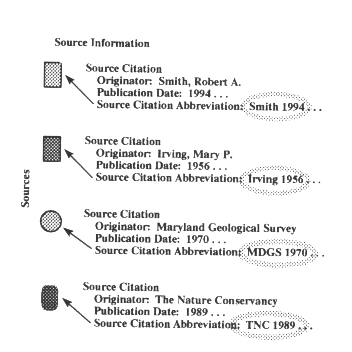
Assign a unique abbreviation to each source. The standards do not describe how to create the abbreviation. One means is to use the Originator and Publication Date of the source. Other styles also are possible. For example, a discipline that had a standard style for citing references in professional papers might choose that style for the abbreviation. Large organizations that have a library of source materials may choose to use the library's unique identifier for each source as the abbreviation. The most important thing is that each source must have a unique abbreviation.
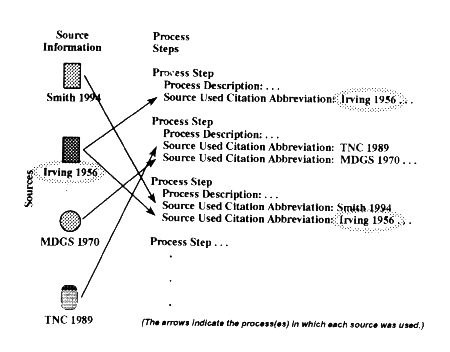
Use the abbreviations to link the sources to the processing steps.
